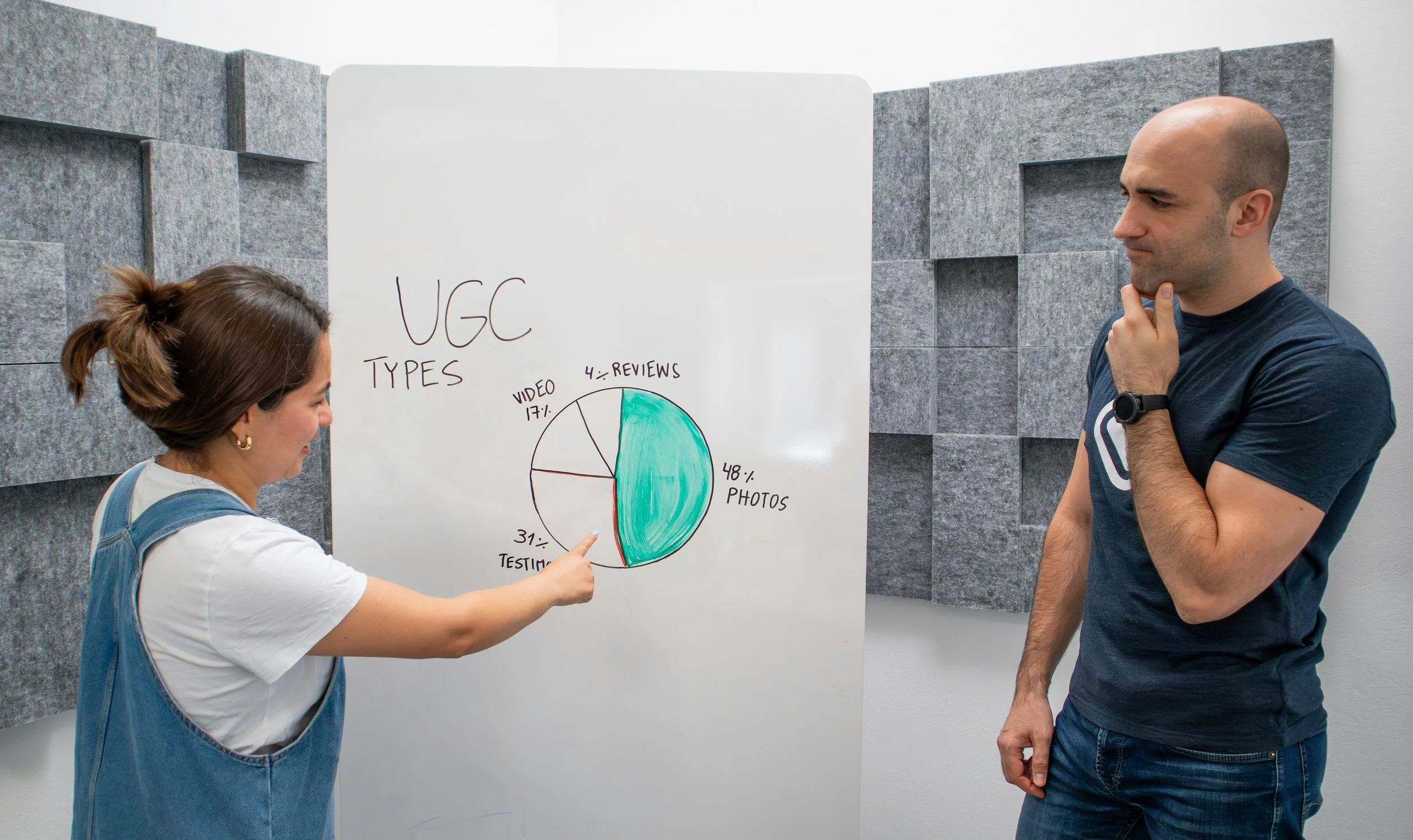UGC and Community-Led Branding: Turning Customers into Co-Creators
In an era defined by participation rather than persuasion, the most successful brands are no longer just broadcasting messages. They are building communities. Traditional marketing once relied on carefully controlled narratives crafted by agencies and approved by executives. Today, authenticity is currency, and consumers want to shape the stories they believe in.
User-generated content (UGC) and community-led branding are at the centre of this shift. They transform audiences from passive recipients into active contributors, inviting them to co-create meaning, value, and cultural relevance alongside the brand itself. This approach not only amplifies engagement but also builds deep emotional connections that money cannot buy.
The Rise of Co-Creation in the Digital Age
Social media platforms have democratised creativity. Every smartphone user now has the tools to film, edit, and share their perspective with the world. This empowerment has blurred the boundaries between brand and audience. People no longer wait for marketing campaigns; they participate in them.
According to research from Stackla, 79 per cent of consumers say that UGC highly influences their purchasing decisions, while only 13 per cent trust branded content to the same degree. The implication is clear: people trust people more than they trust logos.
As audiences gain creative confidence, they expect brands to recognise and celebrate their voices. The rise of TikTok challenges, review culture, and influencer collaborations are not just trends; they represent a deeper transformation in how cultural authority is distributed. Power has shifted from the boardroom to the community.
What is Community-Led Branding?
Community-led branding is a strategy that places customers, fans, and advocates at the core of brand creation and storytelling. Rather than dictating identity from the top down, the brand becomes a platform that facilitates shared expression and participation.
In this model, the community influences product ideas, creative direction, and campaign evolution. The brand’s role changes from being a speaker to being a listener and enabler. It provides the values, vision, and tools that help individuals shape their own version of the brand experience.
A strong community does not just consume; it contributes, defends, and evolves the brand. Think of communities around LEGO, Peloton, or Glossier. Each thrives on collaboration between brand teams and passionate users. Their growth is driven as much by customer creativity as by corporate marketing budgets.
The Power of User-Generated Content
User-generated content is the most visible form of community-led branding. It encompasses photos, videos, reviews, stories, and posts created voluntarily by customers or fans. Its impact lies in three critical advantages: authenticity, scalability, and relatability.
Authenticity: UGC reflects genuine experiences rather than scripted messages. It shows real people using products in real contexts, which builds credibility and emotional resonance.
Scalability: Every customer is a potential content creator. By encouraging and curating contributions, brands can multiply their storytelling capacity without proportionally increasing their production costs.
Relatability: UGC speaks in the language of the audience. It conveys diversity, individuality, and spontaneity that polished campaigns often lack.
When managed effectively, UGC becomes a continuous source of creative energy. It allows the brand to evolve organically, mirroring the lives of those who engage with it.
From Audiences to Advocates
The transition from customer to co-creator begins with recognition. When people feel seen and valued, they become emotionally invested. Simple actions such as reposting customer photos, highlighting community stories, or rewarding contributions signal that the brand genuinely listens.
However, advocacy cannot be forced. It grows from shared values and meaningful interaction. A brand that builds a community around purpose or identity rather than mere products inspires loyalty that transcends transactions. Patagonia’s environmental activism or Gymshark’s fitness community illustrate how shared belief systems turn customers into ambassadors.
Advocacy thrives when members feel ownership. Co-creation transforms them from participants into partners, ensuring that brand evolution reflects collective vision rather than corporate decree.
Building a Community-Led Brand: Key Principles
Developing a genuine community-led approach requires more than setting up a hashtag. It demands cultural openness, strategic discipline, and consistent reciprocity. Below are key principles that define success.
1. Start with Shared Purpose
A strong community forms around a cause, belief, or aspiration that resonates beyond the product itself. Whether it is sustainability, creativity, wellness, or empowerment, the purpose must be authentic and actionable. It becomes the glue that holds the community together and the lens through which contributions gain meaning.
2. Design Spaces for Participation
Communities thrive in environments that enable connection. This could be a branded online forum, a Discord channel, or even a physical pop-up space. The platform matters less than the sense of belonging it creates. Brands should design spaces where people can exchange experiences, ideas, and feedback without feeling that every interaction is being monetised.
3. Empower Creators, Do Not Control Them
The essence of co-creation lies in trust. Brands must resist the urge to over-curate or sanitise UGC. Allowing creative freedom encourages authenticity, even if it occasionally challenges brand guidelines. A light-touch approach that guides rather than governs generates richer and more varied content.
4. Recognise and Reward Contribution
Acknowledgement fuels motivation. Featuring community creators on brand channels, offering exclusive access, or providing small incentives such as product previews demonstrates appreciation. Recognition reinforces the emotional contract between brand and community, turning contributors into long-term collaborators.
5. Integrate Feedback into Action
True co-creation extends beyond marketing content. It means listening to community input on product features, service improvements, or campaign ideas and acting on it. Publicly acknowledging when community suggestions shape decisions reinforces trust and demonstrates transparency.
6. Measure Meaning, Not Just Metrics
Traditional performance indicators such as reach and impressions only capture part of the story. Community-led branding requires metrics that track emotional engagement, advocacy, and cultural relevance. Sentiment analysis, community growth rate, and contribution diversity are better indicators of long-term health.
Case Studies: Community in Action
Glossier
Glossier revolutionised beauty marketing by positioning its customers as collaborators. Founder Emily Weiss built the brand from an online community of readers on her blog Into The Gloss. Rather than dictating trends, Glossier crowdsourced ideas, product feedback, and even campaign imagery directly from its audience. The result was a brand voice that felt human, conversational, and inclusive, reflecting the very people it served.
LEGO Ideas
LEGO’s “Ideas” platform invites fans to design their own sets. Concepts that receive sufficient community support are reviewed by LEGO designers, and successful proposals are produced as official sets, with creators receiving royalties. This initiative turns enthusiasts into legitimate partners and keeps the brand at the cutting edge of creativity.
Gymshark
Gymshark built its empire not through traditional advertising but by nurturing a community of fitness creators and fans. Early partnerships with micro-influencers created authentic representation, while the brand’s digital events and content challenges reinforced inclusivity and energy. Gymshark’s followers see themselves not just as customers but as part of a lifestyle movement.
These examples highlight that community-led branding is not limited to one industry. It is a mindset that values collaboration over control and dialogue over declaration.
The Role of Technology
Technology enables co-creation at scale. Social platforms, AI-driven analytics, and creator tools have made community participation both accessible and measurable.
AI can help identify emerging advocates, track sentiment, and recommend personalised engagement strategies. Meanwhile, immersive technologies such as augmented reality (AR) and virtual reality (VR) open new dimensions for interactive brand experiences.
For example, Nike’s “By You” platform uses digital design tools to let customers personalise products. This not only boosts engagement but also deepens emotional connection by letting users imprint their identity on the brand’s output.
However, technology is a facilitator, not a substitute for empathy. Automation must serve human relationships, not replace them. The strongest communities form when technology amplifies shared meaning rather than simply collecting data.
Challenges and Ethical Considerations
While community-led branding offers powerful advantages, it also introduces new complexities.
Control and Consistency: Allowing user participation risks inconsistent messaging or off-brand content. Brands must define clear creative boundaries while encouraging freedom.
Diversity and Inclusion: Communities must be inclusive and representative. Over-amplifying a narrow subset of creators can alienate broader audiences.
Data Privacy: Encouraging participation requires collecting user data responsibly. Transparent policies and consent mechanisms are vital.
Intellectual Property: When customers co-create, ownership of content can become ambiguous. Clear terms of use protect both brand and creator.
Authenticity Pressure: As UGC becomes mainstream, audiences can sense when it is manipulated. Paid collaborations should always be disclosed to maintain trust.
Navigating these challenges requires ethical leadership and transparent communication. The ultimate goal is to create relationships built on mutual respect, not exploitation.
The Business Case for Community-Led Branding
Beyond engagement metrics, community-led branding delivers tangible business benefits.
Loyalty and Retention: People are less likely to switch brands when they feel emotionally connected and recognised.
Cost Efficiency: UGC reduces production costs and extends content reach organically.
Product Innovation: Community feedback provides a constant stream of insights and creative ideas.
Crisis Resilience: Strong communities defend brands during controversies or downturns.
Cultural Relevance: Active communities keep brands attuned to shifting trends and values.
Essentially, community-led branding transforms customers into an always-on innovation and advocacy engine.
Looking Ahead: The Future of Co-Creation
The next phase of UGC and community-led branding will likely be shaped by decentralised platforms and creator economies. Blockchain-based systems could allow contributors to own shares of the content they produce, blurring the line between consumer and shareholder.
Meanwhile, AI will enhance personalisation, suggesting co-creation opportunities based on behaviour and preferences. Brands that use these technologies ethically will create ecosystems where creativity and value are shared more fairly.
In this future, marketing is not about campaigns but about continuous collaboration. The community becomes the brand’s most valuable asset, a living organism that learns, grows, and adapts with it.
Conclusion
UGC and community-led branding mark a profound shift from corporate storytelling to collective storytelling. They recognise that audiences no longer just consume; they create, comment, and co-own the cultural spaces that brands occupy.
By inviting customers to become co-creators, brands gain authenticity, agility, and enduring loyalty. The relationship evolves from transactional to transformational. When people help shape the brand they love, they invest not only their attention but also their identity.
The brands that thrive in the years ahead will not be those with the loudest voices, but those that listen the most and build with, not for, their communities.

